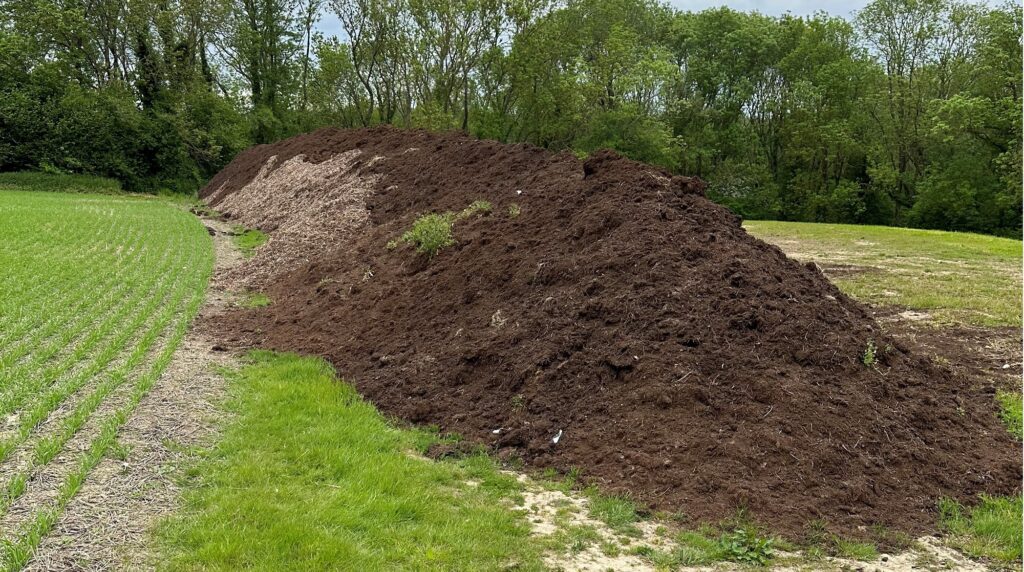Well, it’s always interesting sitting down to write an article and thinking of things to wax lyrical about. Quite often, the farmer contributions are all about success stories! Like how to grow 12 tons per hectare of 13% milling wheat on 20 kilos of N and an application of home-brewed compost tea, how a 15-way multi-species cover crop can save the planet, or the latest piece of life-changing machinery that will transform your business! Of course, I’m slightly exaggerating, but I do find myself continually searching for positive things to say every six months!
So, given that not everything is rosy all of the time, this update will be more glass-half-empty than full! There is a saying that goes along the lines of “two steps forward and one step back,” and this year seems like the “one step”!
Before I delve into that remark, it’s important to give some background to my claims. 2022 was actually a great year for our business. Crops grew remarkably well in very dry and hot conditions. Harvest was very easy, with every ton harvested dry, and yields were pleasing with very high bushel weights. To top it off, wheat prices were at record levels, and although I missed the highest prices, I did sell a fair chunk above £300 per ton. However, the last load to clear the shed this month was only sold at £200 per ton. So financially, the harvest has been a success. We have also managed a major clear-out of surplus machinery, including a 3m power harrow drill which first made an appearance on the farm in 1985! This has given us the opportunity to add the 12m Horsch Avatar drill, another 1200 tons of on-floor grain storage, and a bigger 3-ton grain bucket!
I also have a bee in my bonnet about the use and safety of bulk seed bags! When you have 2 tons of seed hanging above your head with the telehandler boom at full extension on a windy October evening, safety definitely comes into focus! With that said, we are looking closely at building a drill filling trailer that handles bulk seed straight into the drill. With the appetite of our 12m drill, we really need a hopper to hold 12-15 tons for a good day’s drilling. So something along the lines of an ex-gritter body paired up with a folding hydraulic auger looks to be what we’re thinking at the moment. That’s for next winter, though!
So back to my “one step back”! This spring, my independent agronomist has decided to move on, and he has been replaced by a friend of mine and one of the “Nutters.” Tom Reynolds is a farm manager and contractor in East Kent but will now split his time between his farming business and some agronomy for Edaphos, whose services we employ for all things agronomy, soils, and nutrition.



On his first visit, he recommended that we spray off quite a few fields of very patchy winter beans, which had unacceptable levels of black grass. This was a painful but correct decision and earned him the nickname “Roundup Reynolds”! On his second visit, we had just planted our spring oats, which were emerging beautifully. However, the blackgrass was emerging just as quickly, despite 3 or 4 flushes since last harvest! I even sprayed glyphosate the day before drilling! So, Tom’s second job was to recommend spraying off another large chunk. “It’s the right decision long term,” he told me, but that doesn’t take away the pain of spraying out a beautifully even crop and the impending embarrassment of golden fields dying off, which can be seen for miles! It seems from talking to others that I’m not alone in my ability to grow an incredible crop of problematic grass?!
I’m sure every blackgrass seed in Kent has grown legs and marched ant-like to my farm with an ability to spot the sprayer entering the field. At this point, they all go and hide under a stone, then decide to grow. This zero-tolerance approach to blackgrass seems to be the only option. Selective herbicides seem to have become utterly useless this year. We are also seeing a fair bit of septoria on wheat crops and BYDV in odd patches.
On the whole, though, wheat crops look full of potential. 150 kg of N has been applied in 2 or 3 splits in liquid form, and a foliar AF Nitrogen will be applied at the T3 stage. We will then assess whether we push for 13% protein, based on tissue tests and advice from Edaphos.
We have been busy bringing more compost onto the farm from a neighbouring soft-fruit grower. Strawberry compost is finer and looks like coffee grounds. Raspberry compost is far coarser and really needs a year before it’s ready to spread. We will try to turn this a few times and produce something that really improves the land it’s applied to. With show season about to start, I’m still undecided as to which ones I’ll attend. I’ve always been reluctant to spend money to attend an event where people spend all day trying to sell me things, be that machinery, services, or their latest book! With a grain store floor to lay and 240m of mastic sealant to apply, my time may be better spent getting everything ready for harvest! Let’s hope June brings us plenty of sunshine with an occasional shower, but not just after I’ve rowed up all my hay!! Have a safe and bountiful harvest, everyone.


